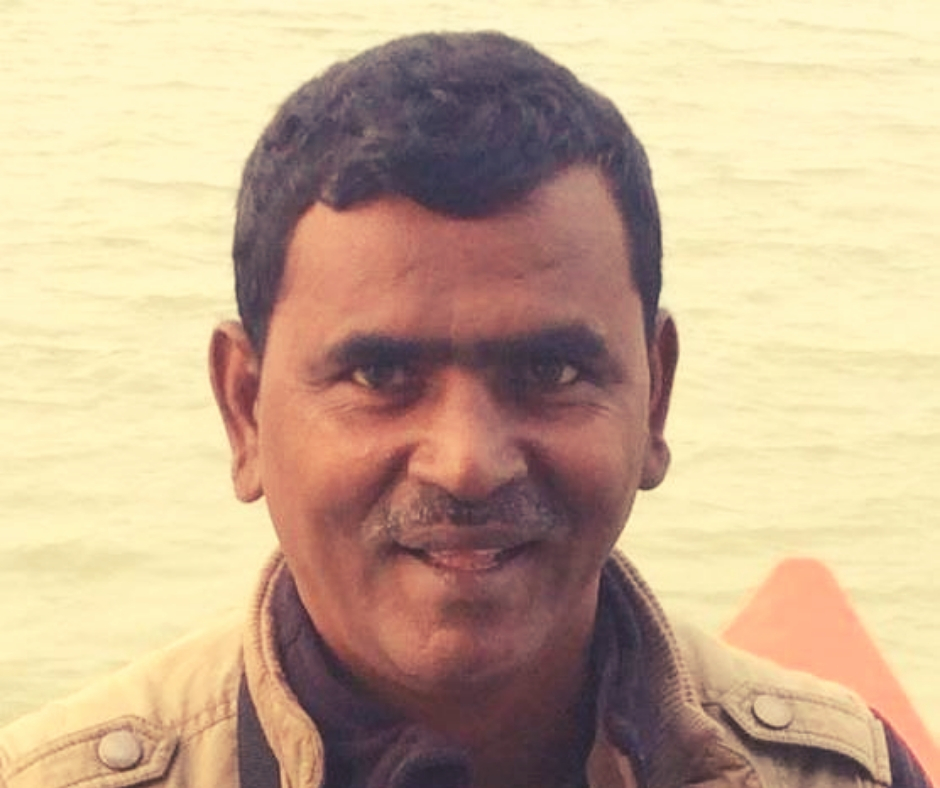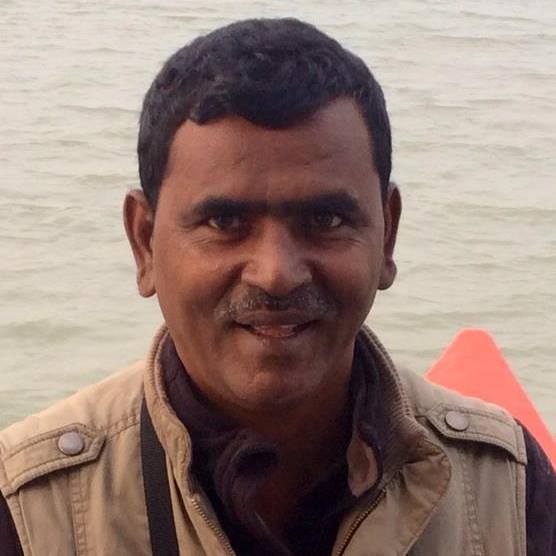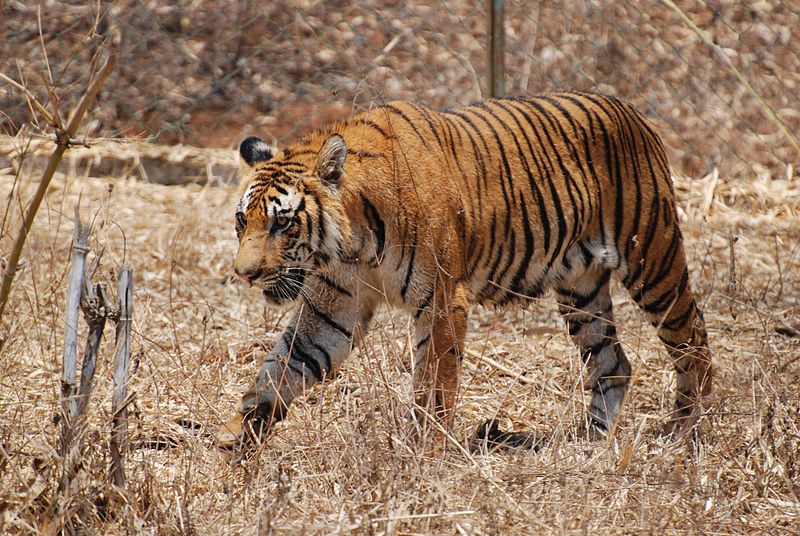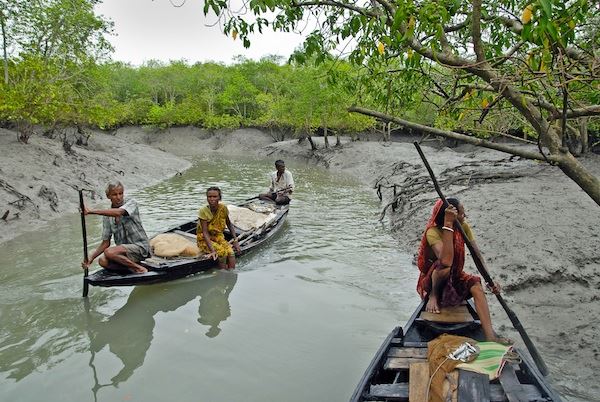How a Dying Doe Turned This Poacher Into a Conservationist Who Has Saved 70 Tigers
“If man is going inside the jungle, the defaulter is the man not the tiger. I never blame the tiger.”

For Anil Mistry, a 52-year-old conservationist, born and raised on Bali Island in the Sundarbans region of West Bengal, protecting nature and the people living within it, is at the heart of his identity.
For the founder of the Bali Nature and Conservation Society, this wasn’t always a way of life. In fact, before he turned to nature conservation, he hunted animals living in the wild with his family and friends. For his forefathers, hunting was the way to survive and make ends meet.
“My grandfather and his six sons, including my father, migrated from Bangladesh in the early 1950s to settlements like Hemnagar and Kumirmari in West Bengal, before settling on Bali Island. It was a forest at the time, part of which they cut down to establish their habitat. Naturally, they poached deer, tigers, birds, wild boars and other forms of wildlife. When I grew up, I automatically learnt how to hunt,” says Mistry, in a conversation with The Better India.
However, everything changed one fine day in 1990.
“After graduation, I would play football with my friends and then hunt deer for pleasure. One day, when my friends and I were out hunting, they shot a doe that was there with her small fawn. Seeing the doe in pain and her fawn in tears, I felt great pain. That’s when my determination to end poaching began. Immediately after the incident, I went to the forest department and met the then field director, Pradeep Shukla. I confessed to the incident,” says Mistry.
In response, the senior forest official suggested that Mistry establish a society or organisation to combat poaching. He assured him that the forest department would support him in this endeavour. That’s when he set up the Bali Nature and Conservation Society (BNCS) later that year.
“Our objective is to save wildlife, nature and the people. In association with the forest department, we help locals acquire alternative means of livelihood so that they don’t have to hunt. We also work with officials, conducting joint-patrolling operations to stop poachers from hunting,” informs Mistry.

However, Mistry’s life took a real turn when he met with Belinda Wright, the founder of Wildlife Protection Society of India (WPSI), soon after setting up the BNCS. After meeting her at a seminar, he was given a permanent job with the WPSI to oversee their Sundarbans chapter, conduct anti-poaching activities and find ways of offering locals alternative means of livelihood.
Mistry shares, “Locals go into the jungles for their livelihood—fishing, hunting, honey collection. Sometimes they encounter tigers, which are in their natural habitat, seeking food. Man-animal conflict is inevitable under such circumstances. If you want to save the jungle, you have to reduce the incidences of man-animal conflict. That’s why we are working with the government to offer locals alternative livelihoods that won’t require them to go into the jungle regularly.”
Their livelihood initiatives regarding sustainable agricultural practices, fishery and veterinary sciences, have been successful. After locals receive training in their respective fields, chicken, ducks, fish seedlings, and other such inputs are given to them.
For instance, some locals used to go into the jungle for fishing. Today, however, they have a small pond near their home where they are breeding more fish for consumption as well as sale.
“Altogether, they are earning from these alternative sources than they would through the jungle, without any real risks,” says Mistry, expounding on the benefits of these initiatives.
However, it isn’t just the WPSI involved in such efforts. Research organisations like Indian Council for Agricultural Research (ICAR) and forest officials at the Sundarbans Biosphere Reserve also help in training the locals in a real collaborative effort.
“The WPSI is running a medical camp where we distribute medicines and provide free treatment for locals and their livestock. This is a regular and collaborative process with people from the area. No one organisation can do this work alone,” says Mistry.
He also liaises between government officials and villagers to enable development in the area through the construction of brick roads and irrigation canals, and the provision of solar lights.
These concerted efforts have borne real fruit with very few incidents of poaching reported from the Sundarbans. What’s even more remarkable is the change in behaviour. Earlier, if a tiger strayed into a village, locals would try and kill it. Today, they inform the forest department and organisations like BNCS and WPSI to help them rescue it and release it back into the wild.
Thus far, Mistry has been associated with the capture and release of 70 tigers.

He believes that there are more than 100 Royal Bengal Tigers in the Sundarbans, but he isn’t too sure about the exact figure. Irrespective, this is a success story of the Sundarbans.
Further, Mistry offers a unique perspective on man-animal conflicts following incidents like last year when the Maharashtra government ordered the killing of Avni, the tiger.
He elaborates, “We have taken over their space. When they see any live moving animal in the forest, their normal behaviour is to think that it is their prey and not a ‘human being’. Even when they stray into a village, they often eat livestock. When people run behind tigers in panic, they sometimes pounce in retaliation. This is not their fault; it is ours.”
However, there have been instances of alleged ‘man-eating tigers’ in the news. In a separate conversation with Mongabay, Dr Pranav Chanchani, coordinator of the Tiger Conservation Programme at WWF-India, proposed an interesting solution to solve these ‘conflicts’.

“A two-fold approach, involving proactive or direct mitigation as well as indirect measures, is needed. Direct mitigation measures include operations to capture and rehabilitate ‘problem animals’, installing devices to repel animals and managing farmland habitats beyond forests to make such areas less attractive for tigers. Indirect measures can be used to help strengthen attitudes of tolerance among the public, and information campaigns,” he tells the nature publication.
Also Read: A Local Conservation Hero, Amazing Telangana Cop Has Rescued 1300 Snakes in 5 Years
Mistry’s position on humans entering a jungle and meeting a tragic fate is clear. “If a man is going inside the jungle, the defaulter is the man, not the tiger. I never blame the tiger,” he adds.
It is thanks to people like him that biodiversity-rich regions like the Sundarbans conserve their environment, despite the massive challenges.
(Edited by Shruti Singhal)
Like this story? Or have something to share? Write to us: [email protected], or connect with us on Facebook and Twitter.
If you found our stories insightful, informative, or even just enjoyable, we invite you to consider making a voluntary payment to support the work we do at The Better India. Your contribution helps us continue producing quality content that educates, inspires, and drives positive change.
Choose one of the payment options below for your contribution-
By paying for the stories you value, you directly contribute to sustaining our efforts focused on making a difference in the world. Together, let’s ensure that impactful stories continue to be told and shared, enriching lives and communities alike.
Thank you for your support. Here are some frequently asked questions you might find helpful to know why you are contributing?


This story made me
-
97
-
121
-
89
-
167











